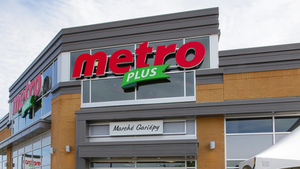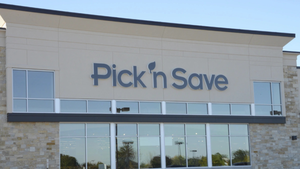Prepared for the Future
Focusing on additional day parts and different demographics, adding variety, and calling attention to prepared food in new ways, retailers are banking heavily on the category. With the darkest days of the recession behind him, one Kentucky retailer told SN that his prepared-food program is the only department in the store showing growth, and he has faith in it. He continues to add variety, has nabbed
May 10, 2010
ROSEANNE HARPER
Focusing on additional day parts and different demographics, adding variety, and calling attention to prepared food in new ways, retailers are banking heavily on the category.
With the darkest days of the recession behind him, one Kentucky retailer told SN that his “home-cooking” prepared-food program is the only department in the store showing growth, and he has faith in it.
He continues to add variety, has nabbed a state/federal contract to provide meals to senior citizens' day centers, and is actually looking to expand space for prep and merchandising.
“It's our cooked-from-scratch food that sets us apart from the big chains,” said Jimmy Higdon, owner of Higdon's IGA, Lebanon, Ky.
Other retailers said they're responding to how focused consumers have become on value, and one said that developing a brand for his prepared-food program has helped generate renewed shopper interest, ultimately boosting sales by double digits.
“Last year, our sales of prepared foods — always a pretty sizeable category for us — were flat. That's why we decided to brand them, and that has been a big help,” said Doug Sanders, president and chief operating officer at 50-unit Sprouts Farmers Market.
He started the New Year with the brand “Sprouts Country Kitchen,” and put it in the spotlight. Since then, prepared-food sales have jumped 10% to 12%.
“There were probably other factors that played a role, but we attribute most of that increase to the brand,” Sanders said.
For the first time, too, Sprouts added seafood to its prepared-food menu — grilled salmon and tilapia with wild rice — and those items are selling well. Sanders added that the key to a solid prepared-food program is bringing in new things to keep people interested, while continuing with old standbys like mashed potatoes.
That idea is echoed by other retailers as they look for new ways to pep up their meal programs.
HEALTH IN A HURRY
Several retailers said they're looking for new ways to underscore value, and often do so by targeting health-conscious consumers — highlighting better-for-you ingredients or touting an item's health benefits.
At three-unit McCaffrey's, in Langhorne, Pa., the company's vice president, Mark Eckhouse, told SN he will be meeting with a nutritionist to discuss menu additions that will be particularly healthful and will have attributes easy to describe.
“It can't be a long message, but we do want to communicate to the consumer the value of our attention to healthy ingredients,” Eckhouse said.
“It's important that we find ways to show and prove value. It doesn't always have to be pricing. It could be adding organic or all-natural or just convenience.”
Eckhouse pointed out, too, that offering a particular cooked entree could be valuable to someone who may have a hankering for that entree, but doesn't know how to cook it.
Similarly, United Supermarkets, Lubbock, Texas, has cultivated a thriving breakfast business, and is now targeting health-conscious consumers with a new section of the breakfast counter that's been dubbed “The Living Well Breakfast Bar.”
Steel-cut oatmeal and a variety of yogurts are the stars. So are yogurt parfaits. What's more, egg white flatbread sandwiches and egg white and spinach frittatas are cooked to order.

“With our marketing, we're targeting the health clubs, the fitness centers,” said Diane Earl, business director of deli/foodservice for the 50-unit chain.
“We take some yogurt parfaits and frittatas over to them,” Earl said. “When you get them to taste something good, they're going to talk about it to other people.”
Earl said breakfast in general is getting more notice in her area, but it's been particularly successful at United. The Living Well Breakfast Bars in the chain's Market Street fresh-format stores are showing some growth, and at the three Market Street locations that have drive-through mini-stores in their parking lots, breakfast business is up a whopping 25% year to date.
“Part of that is probably because we're in a developing area and there are a lot of construction workers who come through.”
The first of the mini-stores, which offer a variety of prepared foods, was deemed a success soon after it opened three years ago. In fact, its success spurred the opening of two more, and a fourth location is planned.
Called “A Taste of Market Street,” the smaller stores are not to be confused with a convenience store, officials told SN earlier.
Like Market Street stores, the 1,300-square-foot mini-stores offer many of the same products, including fresh produce, gourmet meals to go, Peet's Coffee, baked goods and more — just on a smaller scale. A destination item, mango tea, is bolstering traffic right now.
“In the afternoon, the soccer moms and others keep coming through for their mango tea,” Earl said. And, when they do, they usually pick up snacks or something for dinner.
The venue's success is testament to consumers' quest for convenience.
CONVENIENT VALUES
One industry expert, Harry Balzer, told SN he sees drive-up windows an important part of the future.
“Eating in cars didn't diminish last year,” said Balzer, vice president, NPD Group, a consumer research firm based in Port Washington, N.Y.
In fact, restaurant drive-throughs fared pretty well, and Balzer sees a huge opportunity on the horizon for supermarkets with a well-developed prepared-food/meal program.
“Supermarkets, if they can give consumers what they want for less than they can get it at a restaurant, and if they can give them more convenience as well, will do well,” said Balzer.
But he stressed the importance of value pricing, too.
“Consumers used to look for convenience at any cost. Now they're still demanding convenience but they're saying they can't spend more for it.”
Nonetheless, just as Eckhouse and others said, there are many ways to present value, and for many consumers, getting in and out of a store quickly remains a top priority.
Balzer maintains that supermarkets, with their large one-story buildings and big parking lots, are naturals for a drive-through.
Meanwhile, in the name of convenience, one New Jersey independent's corporate chef has made some changes that he had never considered before. He's looking to take a slice of c-stores' business.
“To do that, I've been trying to attract a younger crowd,” said Chef James Conroy, who's manager of foodservice at nine-unit Food Circus' Super Foodtown stores, Middletown, N.J.
“They shop more sporadically and are in Wawa [a popular regional c-store chain with a respected fresh-food program] three, four, five times a week. So I'm looking to Wawa-fy my sub sandwich shop at our Ocean store.”
For the first time, Conroy is supplementing his kitchen-fresh offerings with a selection of sandwiches sourced prepacked and frozen. Hamburgers and hot dogs can be microwaved right at the counter a la typical c-store fare.
“I didn't think that was my mission, but really it is, if that's what the customer wants, if that means convenience to them,” Conroy said.
He's even incorporating stacks of Pringles.
“While we make our own gourmet salads, we're also bringing in some ready-to-go packs. We're not making a big deal out of this. Just quietly trying to satisfy a need.”
But he has by no means given up on fresh prepared items, Conroy said. Sales of his regular, prepared foods have held up well over the last year, he said.
“I still have a great following for dinners, and our biggest sellers, rotisserie and fried chicken are still growing.”
BIG DEALS
Conroy, like others SN talked to, has been aware of his customers' budget-consciousness, and has adjusted his approach with new items, new pricing and new bundled deals.
“For the first time, we're splitting rotisserie chickens. A half chicken sells for $3.99, and that's going well.”
He also started a Meal Deal of the Month program with March Meal Madness, followed by April Showers of Savings and the current May Mega Meal. Touted with banners and signs in-store, each deal offers bundled items, making a meal for three or four people for under $10. May's Mega Meal, for example, includes a 14-inch, freshly-made sub, a bag of chips, a 2-liter bottle of soda and five brownies for $8.59.
Conroy said he'll soon add Healthy Chef Meals with brown rice and sauteed veggies.
Other retailers this past year have successfully sold “healthy” as a value, and “family,” too.
McCaffrey's value-priced theme nights geared to families have remained strong, even as overall prepared-food sales dipped somewhat during the last 15 months.
Indeed, at one store, all 88 seats in the dining area are apt to be taken on Italian night or All-American night.
“We emphasize, too, that we make our own pizza from scratch, even our own sauce,” he added, pointing out the theme nights help show that McCaffrey's is a healthy alternative to fast food.
Consumers' interest in healthy eating is reflected in the fast expansion of Sprouts Farmers Market, which started with one location eight years ago, and now has grown to 50. More will open this year.
All in all, foodservice at retail has survived the tough economy, and is expected to see better times soon. But many experts believe that as the economy recovers, restaurants will once again be giving prepared-food departments a run for their money.
Both Technomic Inc., Chicago, and the National Restaurant Association, Washington, have predicted respectable growth for retail foodservice this year, and retailers are gearing up.
“I see so much variety being added,” said consultant John Pazahanick, a partner in The Design Associates/Merchandising By Design, Carrollton, Texas.
Pazahanick, who's based in Minnesota, said, “In the Twin Cities, we are seeing an explosion in the amount, the variety of choice and the presentation of prepared foods from a whole host of retailers, the conventional grocery stores, club stores, co-ops and c-stores, too.
“There is an increased or renewed focus [on the category]. It is a huge opportunity to drive traffic and sales.”
Consultant Brian Salus, president of Salus & Associates, Midlothian, Va., wholeheartedly agreed, but warned there's no time to lose.
“The effects of the softened economy over the past one to two years created a window of opportunity for supermarket foodservice, but that window is quickly closing,” Salus said.
“Some retailers have seized that opportunity for share of plate by offering bundled family meals and quick-serve breakfast and lunch offerings, but the competitive restaurant industry has not remained dormant and frozen in time. It's responding with new menu varieties and better value statements.”
He added that time, or lack of it, is a huge factor even as consumers look for value and healthful fare.
“The food and meal providers who solve the time crunch issue for the consumer will be the winners.”
About the Author
You May Also Like




